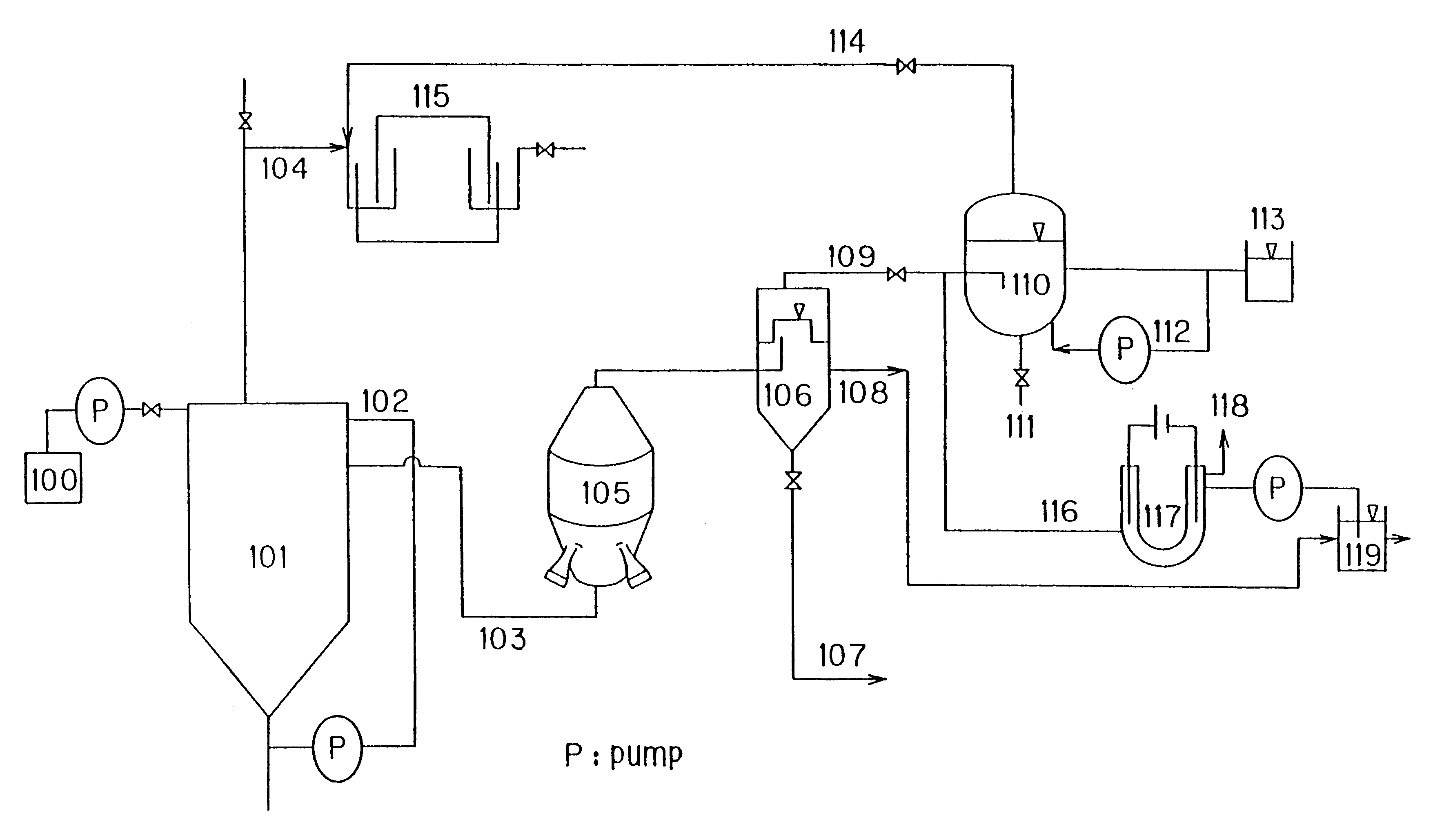Method and apparatus for treatment of organic matter-containing wastewater
a technology of organic matter and wastewater, which is applied in the direction of biological sludge treatment, manufacturing tools, separation processes, etc., can solve the problems of increasing the cost of wastewater treatment process, increasing the electric power consumption and increase the cost of prior art methods, and reducing the efficiency of wastewater treatment. , the effect of improving the yield rate and reducing the cost of treatmen
- Summary
- Abstract
- Description
- Claims
- Application Information
AI Technical Summary
Benefits of technology
Problems solved by technology
Method used
Image
Examples
example 1
The radical generating zone was constructed by a coaxial assembly of a platinum rod as a negative electrode and a titanium dioxide-coated plate as the positive electrode defining a truncated conical zone, of which the generating line had a length of 20 cm and made an angle of 10 degrees with the axis, keeping an average distance of 4 cm between the electrodes. The electrodes were connected to a direct-current power source capable of generating a pulse voltage of 2 kV / cm at a frequency of 10 kHz with a duty ratio of 50% and a current density of 5 to 7 m.ANG. / cm.sup.2
Separately, another truncated conical part defining the ultrasonic zone was connected to the downstream end of a straightly cylindrical part, to which the radical generating zone was connected at the upstream end, and two ultrasonic vibrators capable of emitting ultrasonic waves at a frequency of 28 kHz with a power output of 50 watts or effective power output of 25 watts were installed thereto.
A liquid obtained by digest...
example 2
Using the same radical generation zone as used in Example 1, a wastewater treatment test was undertaken for a digestion liquid having a COD value of 8000 mg / liter and containing 4000 mg / liter of suspended solid matters to examine evolution of carbon dioxide gas. FIG. 6 graphically shows the rate of carbon dioxide evolution as a function of the electric current with (curve A) or without (curve B) application of the ultrasonic waves in the ultrasonic zone.
It is clear from these results that application of ultrasonic waves is greatly effective in increasing evolution of carbon dioxide.
example 3
By using the wastewater treatment system according to the inventive method schematically illustrated by the system diagram of FIG. 7, a wastewater treatment test run was undertaken for a wastewater discharge from a swinery which had a COD value of 5000 to 6000 mg / liter and contained 3000 mg / liter of suspended solid matters, 3000 to 4000 mg / liter of total nitrogen and 5000 to 7000 mg / liter of total phosphorus at a pH of 7.0.
Thus, the wastewater from the swinery received in the receiver vessel 100 of 10 liter capacity and continuously introduced at a feed rate of 5 liters / day into a vertical-type fluidized-bed biogas reactor 101 of 23 liter capacity was circulated through the pipeline 102. The effluent liquid discharged out of the biogas reactor 101 was introduced through the pipeline 103 into the wastewater treatment conduit 105 of the invention to be subjected there to an oxidative decomposition treatment and then transferred into the closed-vessel settling tank 106 of 12 liter capa...
PUM
| Property | Measurement | Unit |
|---|---|---|
| angle | aaaaa | aaaaa |
| frequency | aaaaa | aaaaa |
| frequency | aaaaa | aaaaa |
Abstract
Description
Claims
Application Information
 Login to View More
Login to View More - R&D
- Intellectual Property
- Life Sciences
- Materials
- Tech Scout
- Unparalleled Data Quality
- Higher Quality Content
- 60% Fewer Hallucinations
Browse by: Latest US Patents, China's latest patents, Technical Efficacy Thesaurus, Application Domain, Technology Topic, Popular Technical Reports.
© 2025 PatSnap. All rights reserved.Legal|Privacy policy|Modern Slavery Act Transparency Statement|Sitemap|About US| Contact US: help@patsnap.com



